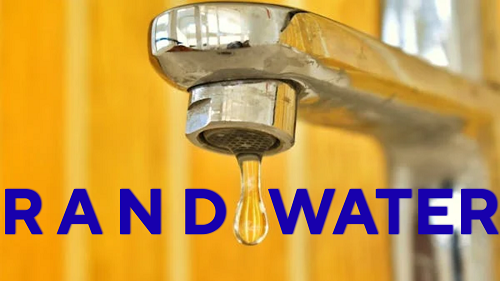Lifestyle
How to Prepare for Low or No Water Supply During Rand Water Maintenance

As Rand Water embarks on the next phase of its planned infrastructure maintenance, running from June 30 to July 18, 2025, many South Africans across Gauteng, North West, and parts of Mpumalanga will face low water pressure or even complete water outages for hours or days at a time.
Municipalities like Ekurhuleni, Johannesburg, Tshwane, Mogale City, Rustenburg, and others will be affected at different intervals due to valve replacements, leak repairs, and reservoir cleanings. While Rand Water has said the work is crucial for long-term reliability, the short-term impact on daily life can be stressful, especially for households, schools, businesses, and healthcare facilities.
But don’t panic. With the right planning and a few practical adjustments, you can stay prepared, hygienic, and comfortable even during a temporary disruption.
Here’s a practical guide on how to prepare your home or business for a low or no water supply during Rand Water’s maintenance.
1. Store Clean Water in Advance
Before your area is affected, store as much clean, drinkable water as you can. You can use clean buckets with lids to store water, a very good example is the 5L or 20L water drums. Make sure you have saved enough water that will last during this period of maintenance. Store more water with Bathtubs (cleaned beforehand) and Bottled water for drinking and cooking
How much water should you store? Plan for at least 2–3 litres per person per day, plus extra for cooking and cleaning. For a family of four, that’s about 30–40 litres per day minimum.
2. Collect and Use Grey Water
Save water with handwashing, Dish rinsing, and Bathing (if still possible before outages). You can reuse this water for flushing toilets, cleaning floors, or watering gardens. Just avoid using grey water for anything involving food or personal hygiene.
3. Flush Smartly
Toilet flushing is one of the biggest water wasters. During outages, switch to bucket flushing. What do I mean by that? Just try to use a bucket of grey water to pour into the toilet bowl and only flush when necessary — as the saying goes: “If it’s yellow, let it mellow…”
4. Sanitize Without Water
Keep hand sanitizer, disinfectant wipes, and antibacterial sprays on hand for cleaning and hygiene when water is unavailable. You can also use dry shampoo, wet wipes, and non-rinse body wash products if needed, especially for children or elderly family members.
5. Plan Meals Around Water Availability
Avoid meals that require lots of water (like boiling pasta or rinsing lots of vegetables) during outages. Instead, you can try cooking one-pot meals, also using canned or pre-washed ingredients can be helpful too, and remember to stock up on ready-to-eat food and snacks
This also means washing fewer dishes, helping you stretch your stored water longer.
6. Do Laundry Before the Shutdown Hits
Washing machines use a lot of water. Try to do all your laundry before the outage reaches your area. If needed, you can hand-wash small essential items using a bucket and minimal water during the downtime, but plan to avoid unnecessary loads.
7. Pre-Fill Toilets, Basins, and Bathtubs
Before the supply drops, fill your toilet cistern, sinks, and tubs with clean or semi-clean water. Cover them to prevent dust or insects.
This stored water can be used over the shutdown period for normal domestic routine chores like Bucket baths, washing hands or feet, or during Emergency flushing.
8. Keep Essentials for Babies, Sick or Elderly People
If you live with vulnerable individuals, you have to know that this period will be very difficult for you and them, so prepare with extra care. You may need: Wet wipes and extra diapers, Hand sanitizer, disposable washcloths, Extra drinking water, soft food, and Emergency medical supplies.
Even if you’re fully stocked, make sure neighbors or relatives nearby are also looked after.
9. Stay Informed About Water Restoration Times
Rand Water has released specific shutdown dates per municipality. Follow the Local municipality’s Facebook or Twitter pages. Their Community WhatsApp groups, and also your water meter (if digital) for pressure changes.
If your tap starts flowing again, don’t assume it’s stable; the system may still be under pressure testing. Use water wisely until full restoration is confirmed.
10. Finally, Report Any Issues or Leaks Immediately
When the system returns, monitor your property for signs of leaking pipes, Unusual smells in water, or Discolored tap water.
If you notice problems, report them to your local municipality or the Rand Water hotline. Leaks can waste thousands of litres and delay full recovery.
Water is life, and while maintenance disruptions are inconvenient, they’re also necessary for a better long-term supply. With a bit of planning, you can avoid panic and get through the dry days safely and comfortably.
Let your neighbors and friends know what’s coming — and help each other stay prepared.












